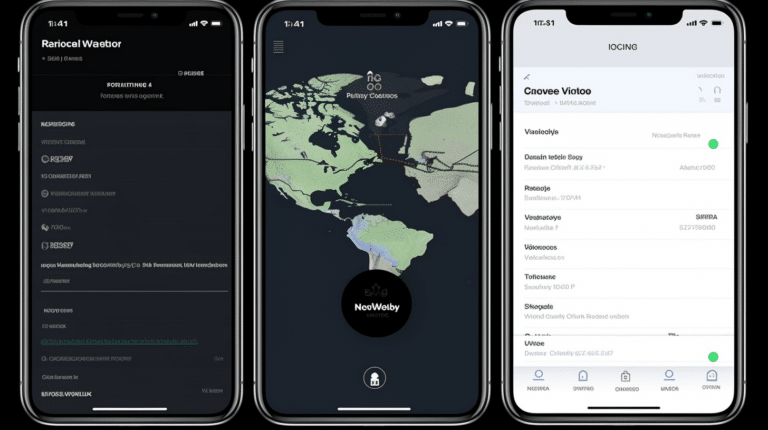In recent years, many Facebook users have noticed a shift in their News Feed, with advertisements appearing more frequently than before. This change can be attributed to Facebook’s increasing focus on ad revenue and the growing number of businesses utilizing the platform’s targeting capabilities. As a result, users are left to wonder why their once familiar and friendly News Feed has become inundated with ads.
Understanding why your Facebook feed is filled with ads requires an examination of the platform’s advertising model, the way in which users’ interests and personal information are targeted by advertisers, and the impact of friends and family connections on ad visibility. Moreover, exploring ways to manage the ad exposure in News Feed, along with considering alternative social networking platforms, can shed light on how users and businesses alike can adapt to this ad-heavy environment.
Key Takeaways
- Facebook’s News Feed has evolved to focus more on advertising due to the platform’s dependence on ad revenue and the rise in businesses using its targeting capabilities.
- Users’ interests, personal information, and connections with friends and family all contribute to the types of ads seen on their Facebook News Feed.
- Managing ad exposure and considering alternative platforms can help users and businesses adapt to Facebook’s ad-heavy environment.
The Shift in Facebook’s News Feed
Algorithm Changes
Over the years, Facebook’s news feed algorithm has undergone several changes to provide users with a more personalized experience. These algorithms consider various factors such as a user’s interests, engagement with content, and recent activities. The aim is to display the most relevant and engaging content for each user. However, this also means that sponsored ads will be more prominent, as Facebook prioritizes content that generates revenue.
The algorithm currently in use, known as EdgeRank, takes into account factors like the relationship between the user and the content creator, the popularity of the content, and the time of the post. This makes it difficult for organic content from pages and individuals to gain visibility on news feeds, leading to more sponsored ads dominating the space.
Increasing Number of Ads
As Facebook’s user base continues to grow, more businesses and brands are investing in advertising on the platform. This has led to an increase in the number of ads appearing on users’ news feeds. Businesses see Facebook advertising as an effective way to reach their target audience, especially with the platform’s advanced targeting options.
This influx of ads means that Facebook users are likely to encounter an increasing number of sponsored posts in their news feeds. As a result, organic content from friends and pages may get pushed further down in the feed and become less visible.
Facebook’s Revenue Source
A significant portion of Facebook’s revenue comes from advertising. In their pursuit of maximizing profitability, the platform aims to deliver ads that are the most relevant and engaging for individual users. This has consequently led to more ads appearing on users’ news feeds.
As Facebook continues to adjust its algorithm to increase user engagement and generate additional advertising revenue, it is likely that users will continue to see an increased number of sponsored ads in their news feeds.
In summary, the shift in Facebook’s news feed towards more sponsored ads can be attributed to changes in algorithm, an increasing number of ads from businesses, and the platform’s reliance on advertising revenue. These factors contribute to the prevalence of ads that users experience while browsing their news feeds.
How Advertisers Target Users
Facebook provides advertisers with various targeting options, allowing them to display ads to users based on specific demographics, interests, behaviors, and browsing history. This helps businesses reach their intended audience and may contribute to the increased presence of ads in users’ news feeds.
Demographic Targeting
Demographic targeting allows advertisers to reach users based on characteristics such as age, gender, and location. By utilizing this form of targeting, businesses can ensure their ads are displayed to potential customers who fall within their desired demographic. For instance, a university might target high school students in a specific region to increase enrollment rates.
Interests and Behaviors
Another tactic used by advertisers is targeting users based on their interests and behaviors. This includes pages they have liked, groups they have joined, and even the conversations they engage in. Facebook collects data on user activity and categorizes it, enabling advertisers to display ads that align with their target audience’s preferences. For example, a fitness brand might target individuals who have shown an interest in running by liking running-related content or participating in running groups.
Retargeting Based on Browsing History
Retargeting is a strategy adopted by some advertisers to recapture users who have previously interacted with their website or content outside of Facebook. This is done by utilizing cookies and pixel tracking. When users visit other websites, advertisers can display their ads on the Facebook platform, creating a sense of familiarity and potentially driving users back to their website.
Ultimately, these targeting methods have contributed to the increased presence of ads on Facebook feeds. As a result, users may notice a higher ratio of sponsored content tailored to their individual preferences and activity.
User’s Ad Preferences and Targeting
Facebook uses a variety of factors to determine the ads displayed on a user’s news feed, including their interests, activities, and preferences. By understanding how these factors work, and how users can manage their ad preferences, it’s possible to minimize the number of unwanted ads in the feed.
Adjusting Ad Preferences
Users can access and adjust their ad preferences by visiting the Ad Preferences page on Facebook. This allows them to add or remove interests that influence the ads they see. Additionally, under the “Your information” tab, users can choose to allow or block advertisers from using certain categories of information, such as relationship status, employer, or education to target ads.
Blocking or Hiding Ads
When a user encounters an unwanted ad in their feed, they can take action to hide it and provide feedback to Facebook. By clicking the three dots icon in the top right corner of the ad, users can select “Hide Ad” to remove it from their news feed.
Moreover, users can exert more control over the ads they see by blocking specific advertisers or categories of ads. This can be done by visiting the “Hide ad topics” section under the “Ad Topics” tab in the Ad Preferences page, where users can choose to block ads related to specific topics, such as parenting, alcohol, or pets.
Providing Feedback on Ads
Facebook encourages users to provide feedback on the ads they see to help improve the relevance and quality of ads shown in the news feed. To provide feedback, click on the three dots icon in the top right corner of the ad, and choose “Why am I seeing this ad?” or “Give feedback on this ad” from the options. Users can also leave comments and share their opinions on the ads directly with the advertisers.
By understanding and proactively managing their ad preferences and providing feedback on ads, Facebook users can help improve the overall relevance of the ads they see in their news feed and reduce the number of unwanted ads.
How Friends and Family Influence Ads
Liking and Sharing of Ads
When friends and family like or share ads on Facebook, it can greatly affect the advertisements you see on your feed. Ads that are liked or shared by people you are connected with tend to have a higher chance of appearing on your newsfeed due to Facebook’s algorithm that prioritizes content based on social connections and engagement1. This is because the platform considers these ads to be more relevant or interesting to you, based on your personal relationships with the people who interacted with them. As a result, these advertisements are more likely to catch your attention and generate engagement.
Impact on Ad Exposure
The influence of your friends’ and family’s interactions with ads can have a significant impact on your overall exposure to advertisements on Facebook. Since their liking and sharing of ads affect the content that shows up on your feed, you may be exposed to a larger variety of ads than you would be if your news2feed only displayed advertisements targeted to your individual preferences and behavior. This social influence may offer you opportunities to discover new products or services that you could have been unaware of, allowing advertisers to reach audiences that may not have initially been within their target demographic.
Overall, your Facebook feed may seem to be dominated by ads due to the influence and preferences of your friends and family. Their online interactions with ads, either by liking or sharing, can have a significant impact on the advertisements you are exposed to and the variety of ads that appear on your feed. By understanding this, you can better manage your ad preferences and the content you see on your Facebook newsfeed.
Managing Ad Exposure on News Feed
See First and Snooze Features
Facebook provides users with options to manage ad exposure in the News Feed through features like See First and Snooze. The See First feature allows users to prioritize the posts they want to see at the top of their News Feed. To use this feature, simply visit a friend or page’s profile, click on the “Following” button, and select “See First.”
On the other hand, the Snooze feature helps users temporarily hide posts from specific friends, groups, or pages for a set period of time, usually 30 days. To enable the Snooze feature, click on the three dots in the upper right corner of a post from a friend or page, and select “Snooze for 30 days.”
These features enable users to have more control over the content they see on the platform, helping them minimize their exposure to ads while focusing on the posts they appreciate.
Prioritizing Friends and Pages
By actively prioritizing friends and pages in your News Feed, you are not only ensuring that you see more of the content you want but also potentially reducing the amount of ad exposure. To prioritize friends and pages, navigate to the News Feed Preferences settings and select the “Prioritize who to see first” option.
Here, you can select the friends and pages you want to prioritize in your feed. By doing so, you are telling Facebook which content is most relevant to you. As a result, the platform may tailor your News Feed to show more of the content you love and less of the ads that you might find disruptive.
In conclusion, by utilizing the See First and Snooze features and prioritizing friends and pages, you can effectively manage your ad exposure on Facebook’s News Feed. It is essential to keep refining your preferences over time to ensure an enjoyable and personalized Facebook experience.
Using Ad Blockers and Browser Extensions
Popular Ad Blockers
Ad blockers can help mitigate the number of ads that appear on your Facebook feed. Some popular ad blockers available as browser extensions include uBlock Origin, Ghostery, and Adblock Plus. These tools work by identifying and blocking ad-related content on web pages.
- uBlock Origin: A lightweight and efficient ad blocker, uBlock Origin is known for its performance and ability to block a wide range of ads. It is available for Google Chrome, Brave, and Opera.
- Ghostery: Besides blocking ads, Ghostery also focuses on privacy protection by blocking trackers that collect your browsing data. It works on various browsers, including Google Chrome and Opera.
- Adblock Plus: A widely used extension for blocking ads, Adblock Plus provides customizable features that allow users to whitelist specific content or websites. It is available for Google Chrome.
Selecting the Best Ad Blocker for Facebook
When choosing the best ad blocker for Facebook, consider the following factors:
- Compatibility: Ensure the ad blocker is compatible with your preferred browser, such as Google Chrome, Brave, or Opera.
- Effectiveness: The ad blocker should effectively block ads on Facebook, including ads on the main newsfeed and the right-hand side of the page.
- Privacy: Some ad blockers, like Ghostery, also block trackers that collect browsing data, providing additional privacy protection.
- Ease of use: The ad blocker should be easy to install, configure, and use as a browser extension.
- Customizability: Look for ad blockers that offer options to whitelist specific content or websites if you want to support certain publishers or avoid blocking non-intrusive ads.
Keep in mind that some ad blockers might only partially block ads on Facebook as the platform continuously adjusts its ad delivery methods to counter ad-blocking technology. Additionally, ad blockers may not be as effective on other Meta-owned platforms, such as Instagram. Always stay informed about the capabilities and limitations of the ad blocker you choose. In this way, you can enjoy a cleaner and less cluttered Facebook experience without overwhelming ads.
Alternative Platforms for Social Networking
In recent years, there has been an increase in social media users growing frustrated with the amount of ads on platforms like Facebook. As a result, many are seeking alternative platforms that focus on user experience and offer a more ad-free environment. In this section, we’ll discuss ad-free social networks worth considering.
Ad-Free Social Networks
- Mastodon: Mastodon is a decentralized social network that allows users to create their own communities and share text, images, and videos without the interference of ads. Unlike Facebook, which relies heavily on advertising for revenue, Mastodon is funded through community support and donations, ensuring an ad-free experience for users. With a focus on privacy and user control, Mastodon offers a refreshing alternative to ad-filled social media platforms.
- Vero: Vero is another ad-free social networking platform that aims to provide users with a more genuine and personal experience. Founded as an alternative to Facebook and Instagram, Vero is subscription-based, which means users pay a fee to access the platform and enjoy an ad-free experience. Vero focuses on recommendations and sharing between friends, instead of relying on algorithms that prioritize advertisers’ interests.
- Ello: Originally created as a response to the rise of ads on Facebook, Ello is an ad-free social network that focuses on the creative community. The platform allows users to showcase their art, photography, and other creative works without the interruption of ads. Ello operates on a freemium model, offering basic features for free while providing additional features for a fee, ensuring the site remains ad-free for its users.
By opting for one of these ad-free social networks, you can enjoy a more tailored and personal social media experience without the constant bombardment of ads. Exploring alternative platforms enables users to take control of their online experience and prioritize genuine connections over advertising.
How Businesses Can Adapt to the Ad-Heavy Environment
With the increasing number of ads on Facebook feeds, businesses must find ways to adapt to this ad-heavy environment to maintain visibility and engagement with their target audience. This can be achieved by experimenting with new strategies for advertising and content creation.
Experimenting with New Strategies
One approach that businesses can take is to diversify their marketing channels. By spreading their promotional efforts across various platforms such as LinkedIn, Instagram, and Twitter, they can capitalize on different user demographics and increase overall reach. Businesses should also consider exploring new advertising techniques, such as native advertising, influencer marketing, and video marketing, to stand out among the clutter of ads on Facebook feeds.
Another strategy is to optimize their content for greater visibility on Facebook. This can be done by:
- Creating engaging content: Posting content that sparks conversations and encourages users to share and interact with it on their own feeds.
- Publishing shareable content: Ensuring that content is easy to share and accessible to a wider audience by using visually appealing images, concise headlines, and simplifying the message.
- Tailoring content for the audience: Analyzing insights from Facebook’s analytics tools to understand the preferences of their target audience and adjust content accordingly.
Moreover, businesses should consider experimenting with Facebook’s advertising tools to better target their audience. By utilizing Facebook’s targeting options, companies can focus their ads on specific demographics, interests, and behaviors. This means that their ads are more likely to reach people who are genuinely interested in their products or services, leading to higher engagement and conversions.
In conclusion, businesses need to adapt to the ad-heavy environment on Facebook by experimenting with new strategies for marketing, content creation, and advertising tools. By diversifying marketing channels, creating shareable and engaging content, and optimizing targeting options, businesses can continue to thrive in a competitive digital landscape.
Frequently Asked Questions
How can I reduce the number of ads in my Facebook feed?
To reduce the number of ads in your Facebook feed, you can try adjusting your ad preferences. This allows you to tailor the ads you see so that they are more relevant to your interests. You can also use browser extensions or mobile apps that block ads. However, keep in mind that these tools may impact the performance and functionality of the site.
What are the reasons for increased ad frequency on Facebook?
Increased ad frequency on Facebook can result from various factors such as changes to the platform’s algorithms, targeting by advertisers, and your browsing behavior. As Facebook generates revenue through ads, the platform continuously works to improve ad relevance and effectiveness for users and marketers.
How can I adjust ad preferences on Facebook?
To adjust your ad preferences on Facebook, go to “Settings and Privacy” from the main menu and select “Settings.” Then, navigate to the “Ads” section, where you can manage your ad preferences. Here, you can review and update your interests, adjust ad settings, and hide specific advertisers from your feed.
Is there a way to limit Facebook ads on mobile devices?
On mobile devices, you can adjust the Facebook app’s ad preferences using the steps mentioned earlier. Additionally, some ad blockers and privacy-focused browsers may help limit ads on mobile devices. Note that using such tools may affect the overall Facebook experience, including layout and responsiveness.
Why does my Facebook feed show fewer posts from friends?
Your Facebook feed may show fewer posts from friends due to the platform’s algorithm, which prioritizes content it believes is most relevant or engaging for you. This may result in a higher proportion of ads or posts from pages instead of personal posts from friends. You can use the “News Feed Preferences” feature to prioritize posts from specific friends and pages.
Can I stop ads from appearing on Facebook videos?
As of now, there is no built-in option to stop ads from appearing in Facebook videos. Some ad blockers or browser extensions may help accomplish this, but their effectiveness may vary and impact the Facebook experience. Remember that ad revenue supports the platform, allowing it to provide its services for free.






